I hope you love the products I've recommended below, just a heads up that as an Amazon associate, I earn from qualifying purchases. This means I may earn commissions on products bought via links on this page.
When you have decided that getting a log splitter is the way forward, you’re stuck with the difficult task of understanding how to choose a log splitter for your needs. This is an especially difficult question to answer and one that can be very overwhelming to the first time buyer. When you first venture into the high powered log splitter world, you can very easily get side tracked by the wrong machine, or left more confused then ever before. Which is not uncommon at all. You will see so many different models that come in many different sizes, that are powered in different ways, and have unique features. So it can get so overwhelming that you don’t even know where to begin.
Fortunately for you, I have compiled a guide to choosing a log splitter for the first time buyer. This will help you understand what exactly you need, and not what some salesperson is trying to push onto you. For example, a 60 year Grandmother does not need a 37 ton gas powered log splitter. No matter what the Salesperson says. More than likely a simple and affordable electric model would be best suited.
Some Things To Consider Before Buying A Wood Splitting Machine
There are many things you will need to consider when you’re looking into just what log splitter you need. You will need to consider just what type of logs you will be splitting, and the size of the logs themselves. Are they going to be a hard or softwood, or a combination of both.
Will you be planning to split just outside your house, or are you going to need to the splitter to be portable because you will be splitting away from your house. This are some of the questions you need to ask yourself and what I hope to help with. Below I will cover the the answers to these questions, so read on and find out how to choose a log splitter yourself.
What Size Ton Rating Do You Need
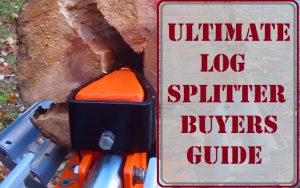
This is one of the most important questions that needs to be answered. The last thing you want is a splitter that isn’t going to split the logs you have which will just waste your time and money. To answer this question you need to start with what types of log you will be splitting, but also what size logs as well. A 6 inch in diameter hardwood like elm or hickory will need a splitter of about 10 tons and above, but if they are a softwood like a pine then you will only need a 4 ton unit. This is where a lot of people can come undone, because that is pretty big difference in log splitter size.
There is one thing that a lot of salesman won’t tell you about log splitters and this is just how effective the vertical position of a log splitter is. Most log splitters that are 22 tons and above come with the ability to go into this position which is a great thing. The thing with this position is that it allows a splitter to split a lot larger logs then the manufactures recommend. A 22 ton log splitter will get through some pretty decent logs roughly between 12 and 18 inches in width with a hardwood like birch. But when you put this same splitter in its vertical position it will allow it to split the same type of wood but at the width of 25 inches. The trick with this is your splitting technique, with such large logs in this position you start from the edge and work your way inwards.
This makes it sound like the larger splitters aren’t worth it, but this is also wrong since the larger 35 ton splitters and above have a different purpose. The larger wood splitters are designed for a few types of people, they are for people like me who like to have more power then what the job actually requires. They are also for people who use log splitters for there business, even if it’s not the biggest company. Some people also like to split larger logs in the horizontal position compared to the vertical position, especially if the splitter has a table or cradle attached. Generally when you split larger logs you will need to split it several times so the horizontal position with a cradle or table, will make life a lot easier.
Electric VS Gas Powered Wood Splitters
Should You Buy Electric Powered?
Both of these types of splitters have there advantages and disadvantages which makes this yet another difficult question. They both play different rolls in the wood splitting industry making both of them be quite essential to anyone splitting wood.
The main thing that separates these types of units is that one is a lot easier to split away from home, while the other needs either a lot of extension leads, or a generator. So this is something you need to think about if you will be splitting close to home both will work, but if you split on acreage and need to be quite far away it is in my opinion that gas powered machine is better. Unless you have a generator the electric loses in this situation.
Where electric shines in my opinion is that you can split inside of your garage, which doesn’t sound like much. Until you realize that you don’t have to deal with external weather such as the rain or snow. Which once I got the option to do this I started to notice I would split logs more often, and have my fire going more often.
The downside of electric apart from how difficult it is to split away from home, is generally they only make smaller models that aren’t as powerful as a gas powered. This isn’t to say all of them don’t have the power, there are a few rare vertical electric log splitters that amplify the power by having the vertical split option. One of the things I really like about electric log splitters, is that you don’t have to do anywhere near as much maintenance as you do on a gas powered machine.
Do You Need The Power Of A Gas Operated Log Splitter?
Gas powered log splitters have there own advantages with very little drawbacks in my opinion. A gas powered unit will lose the ability to split indoors since it produces fumes that are dangerous while in a enclosed area. Plus they can be very noisy. The only other downside to a gas powered log splitter is that you need to do some fairly regular maintenance on its engine. Which can be annoying but these are expensive machines so you want to look after them. But apart from that there really isn’t a downside to a gas powered unit. They come in much larger sizes then there electric counterpart, and you can split away from home without worry. Some are even 3 point gas splitters that can be connected to
This is the choice you will need to make. Gas or Electric? Do you need to split away from home, then it is best to go with a gas splitter, unless you’re okay with also paying for a generator. If you need larger logs split that at max a 22 ton can’t split then you’re really left with only one option, and that is to go with gas. If you don’t need to split such large logs and won’t really need to travel to far from a power switch, then electric is a good option, they are generally cheaper.
Alternatives To Gas & Electric Log Splitters
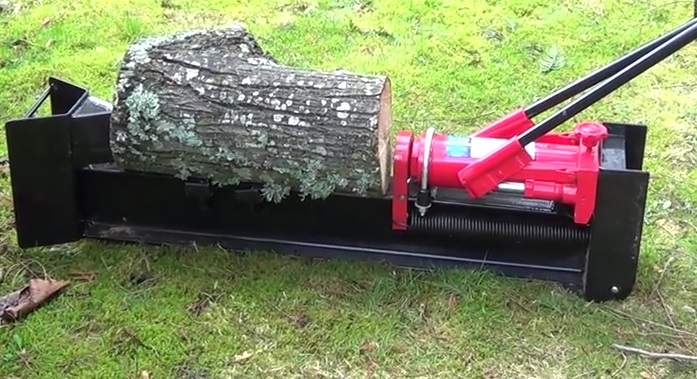
While buying a log splitter is intended to make splitting wood easier and faster, the initial upfront cost can put people off. I know I took a step back when I went to buy my first ever splitter. “You said how much“!. But back then I didn’t know about the alternatives to electric and gas power.
If you want to save time, save injuring your body from swinging an axe but don’t want to re-mortgage the house to buy one, here are your safest bets. But first, I want you to reconsider and think about buying a small electric if you can afford the few extra bucks. You will thank me later. But the alternatives are:
- Manual Log Splitter – These uses your upper body strength to move two levers to build hydraulic pressure to split logs. Does require some stamina and strength, but still easier than an axe.
- Foot Powered Splitting Machines. These work in a similar fashion to operating a foot pump to blow up an air mattress. Easier than a axe, but still not as effective as an electric.
How Portable Do You Need
While log splitters are quite large and heavy, most are very portable. Most larger log splitters that are 22 tons and over, come with a 2 inch ball coupler and tires that are DOT approved. What this means is that you can tow them on the road legally up to 45 mph. While smaller splitters such as electric units that are 5 tons or so are actually very small and light and can be put in the back of your pick up or car. If you’re someone who will be doing a lot of traveling with the need to split larger logs, you will have no choose but to go with a unit that is over 22 tons. But if you really won’t be traveling and only need small logs then a smaller electric 5 ton will do the trick.
The good thing about smaller log splitters is that most if not all store bought units come with wheels and a handle, so they are easy to move around the area to split. But not only that they don’t take up as much room so they are very easy to store, so if you want to put it away after every use. This is particularly easy with the smaller units, which you can’t do with larger units. This is the biggest advantage of smaller units, if you only need to split a few logs they are much easier to get out and start compared to a big gas log splitter. If you want to use a big gas log splitter, you have pretty much set aside a few hours to split a few cords which can be inconvenient.
My Overall Thoughts On Choosing Your Own Splitter
At the end of the day buying a log splitter is a very personal choice, only you know what you need and I can only offer some level of guidance to help you make the best purchase you can. In my opinion unless you’re only planning to split small logs, a 22 ton or 22 ton gas powered log splitter will cover the most bases. They will split almost anything you throw at them, and are cheaper then the larger units out there. But if you’re really only planning to use your splitter on the occasion on much smaller logs, you can’t really go wrong with a nice 5 ton electric log splitter.

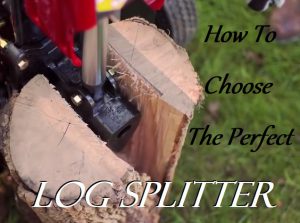
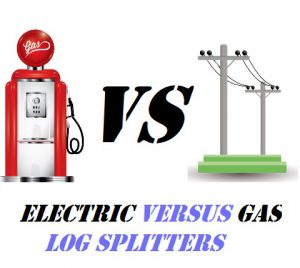
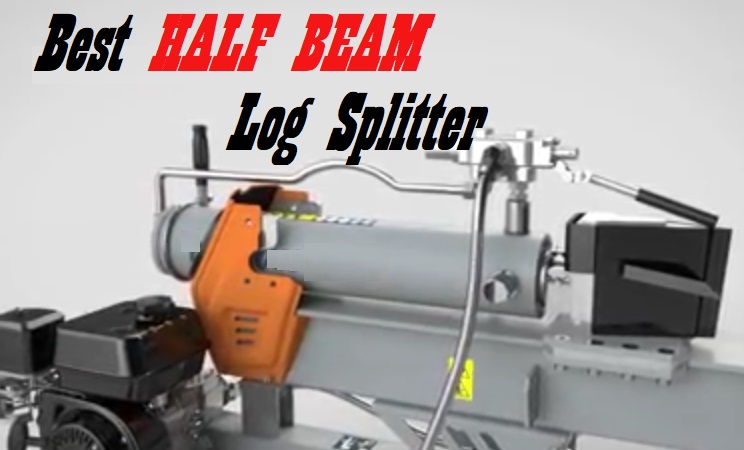



One thought on “How To Choose A Log Splitter That’s Right For You”
I have a lickity log splitter model 12-MK34L that I’ve used for over 50 years and it will split anything you can put on it & is automatic 2 speed with a hammer feature. I have split logs up to 38″ in diameter (big as I can cut with my 20″ bar) I split 15 to 25 ricks a year @ 18″ to 22″ long (mostly Post Oak, Blackjack & Hickory). Since this splitter is getting old I have looked @ the ones on the market & can’t find anything I like.